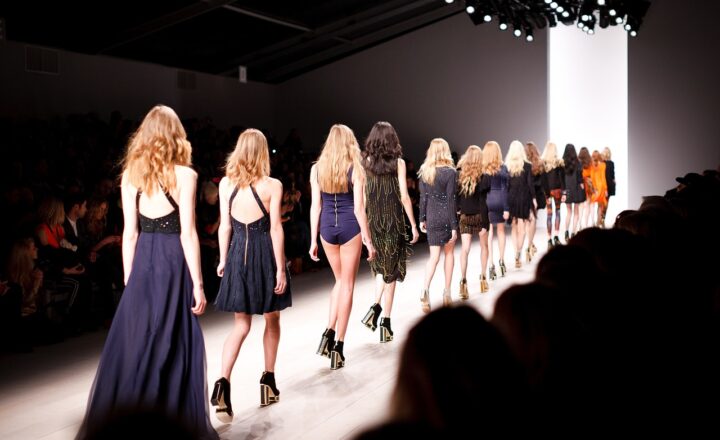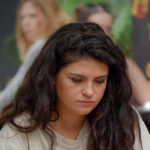Fashion Through the Decades: A Retrospective of Iconic Styles and Trends
November 17, 2024

Fashion is an ever-evolving expression of culture, society, and individuality. As we traverse through time, we can observe how styles have transformed significantly, reflecting the values and attitudes of each era. In this retrospective, we will explore iconic trends that have defined fashion from the 1920s to the present day.
1. The Roaring Twenties (1920-1929)
The 1920s marked a period of significant change in fashion, mirroring the social liberation that came with the post-World War I era. This decade was popularly referred to as the “Roaring Twenties,” a time characterized by optimism, prosperity, and a vibrant cultural scene.
Women’s fashion was revolutionized, moving away from the restrictive clothing of previous decades. The iconic “flapper” style emerged, symbolizing the newfound freedom women were enjoying. Flapper dresses were characterized by loose fit, dropped waistlines, and fringe details, often adorned with beads and sequins. Women embraced their independence, dancing the Charleston and enjoying jazz music while sporting bobbed hairstyles and cloche hats.
Men’s fashion also underwent a transformation, with tailored suits becoming a sign of sophistication. The three-piece suit, featuring wide lapels and high-waisted trousers, was popularized along with accessories such as bow ties and fedoras.
2. The Fabulous Forties (1940-1949)
The 1940s challenged the fashion scene due to World War II, leading to resource shortages. This era saw the introduction of utility clothing, which was designed to be practical and economical. Designers created garments that were versatile and functional, featuring clean lines and simple styles.
Despite the constraints of wartime, women used fashion as a means of self-expression and empowerment. The popularity of the “New Look” by Christian Dior, introduced in 1947, brought back femininity with hourglass silhouettes, emphasizing full skirts and fitted bodices that celebrated the female form.
Men’s fashion during the 1940s was influenced by military uniforms, leading to utilitarian styles like khakis and bomber jackets becoming popular. Post-war, a shift towards more tailored, sophisticated suits reflected the restoration of prosperity and optimism.
3. The Swinging Sixties (1960-1969)
The 1960s are often remembered as a time of rebellion and cultural upheaval. Fashion mirrored this spirit, breaking traditional boundaries and embracing bold self-expression. The era saw the rise of youth culture, with discotheques and mod fashion taking center stage.
Mini skirts, vibrant prints, and bold geometric patterns defined women’s clothing during this time. Icons like Mary Quant and Twiggy defined the look of the decade, celebrating the freedom of the “youthquake.” Psychedelic prints and the introduction of synthetic fabrics allowed for innovative designs.
Men’s fashion shifted as well, with suits becoming more fashion-forward. The “mod” style introduced slim-fit trousers, colorful suits, and flashy accessories, giving rise to the dandy look. The Beatles and Rolling Stones influenced the music scene and fashion alike, making this decade truly iconic.
4. The Glamorous Seventies (1970-1979)
The 1970s were characterized by eclectic styles, with fashion becoming a playground for experimentation. Disco culture emerged, bringing about glamorous clothing that shone under the club lights. Fabrics like satin and sequins dominated the dance floors.
Women’s fashion embraced bell-bottoms, bohemian styles, and maxi dresses. The hippie movement yielded floral prints, fringe, and ethnic-inspired designs, representing a shift toward personal expression and political freedoms. Popular figures like Farrah Fawcett and Cher became symbols of this vibrant decade.
Men opted for flamboyant styles, often wearing brightly colored suits and platform shoes. The leisure suit became a staple, reflecting the relaxed yet stylish mood of the decade. Rock stars with their flamboyant attire heavily influenced trends, showcasing individuality and style.
5. The Dynamic Eighties (1980-1989)
The 1980s were a decade of excess, with fashion reflecting the culture’s commercialism and enthusiasm. Bright colors, bold patterns, and extravagant silhouettes became the norm as self-expression flourished.
Women’s fashion was defined by power dressing, where padded shoulders and tailored suits signified a shift in gender roles within the workforce. Designers like Yves Saint Laurent and Giorgio Armani influenced this aesthetic, promoting strong, confident styles. The leg-warmer trend and oversized accessories characterized the decade further.
Men’s fashion included everything from denim jackets to tailored suits, with luxury brands like Versace and Gucci coming to the forefront. Rock stars such as Michael Jackson and Prince created trends that carried into mainstream fashion, showcasing a mix of edgy and glamorous styles.
6. The Minimalist Nineties (1990-1999)
As the new millennium approached, the 1990s witnessed a shift towards minimalism and grunge aesthetics. This decade saw the rise of diverse subcultures, each influencing the fashion scene in distinct ways.
The minimalist movement emphasized simplicity with monochromatic palettes and clean lines. Designers like Calvin Klein and Jil Sander made a mark with effortlessly chic clothing that focused on wearability over extravagance. In contrast, the grunge movement popularized flannel shirts, distressed denim, and combat boots, led by bands like Nirvana.
Chokers, platform sneakers, and mom jeans became fashion staples for both women and men. The influence of pop stars like Britney Spears and the rise of hip-hop culture brought an exciting mix of casual and high-fashion elements, establishing the foundation for the fashion landscape of the 21st century.
7. The Stylish 2000s (2000-2009)
The early 2000s were characterized by the fusion of streetwear and high fashion. Reality TV stars, hip-hop artists, and supermodels became major influencers. Styles became bolder, often mixing vintage with modern aesthetics.
Y2K fashion embraced bright colors, crop tops, low-rise jeans, and shimmering accessories. Logos became a statement, as designer brands capitalized on the trend, flooding the market with products featuring bold logos and prints.
The rise of technology and social media began to influence fashion significantly, as platforms like MySpace and later Instagram became avenues for self-expression. Celebrities like Paris Hilton and style markers like the “It” bag created a buzzing trend culture that defined the era.
8. Contemporary Styles (2010-Present)
The 2010s ushered in an era of diversity and inclusivity in fashion. Streetwear became a dominant force as high-fashion brands collaborated with urban brands, breaking down traditional barriers in the fashion industry.
Sustainable fashion gained momentum, with consumers becoming more conscious of their choices, prompting brands to adopt eco-friendly practices. Athleisure became a trend as comfort took precedence, merging athletic and casual styles into everyday wear.
The rise of social media influencers has transformed the fashion landscape, empowering individuals to showcase their personal style and reach large audiences. From vintage reselling to new luxury streetwear brands, contemporary fashion reflects a more democratized landscape.
Conclusion
Fashion has always been a mirror reflecting the cultural and social shifts across decades. Each era carried unique styles and symbols that not only defined those times but also paved the way for future trends. As we continue to evolve, the influences from past decades remain ever-present, reminding us of the creativity and innovation that fashion embodies. Whether through the elegance of the 1920s or the boldness of the 1980s, the evolution of fashion remains a captivating story that inspires future generations to express themselves creatively.
Embrace your personal style and draw inspiration from the past to express your individuality in the present day. With fashion constantly changing, who knows what trends the future will hold?






